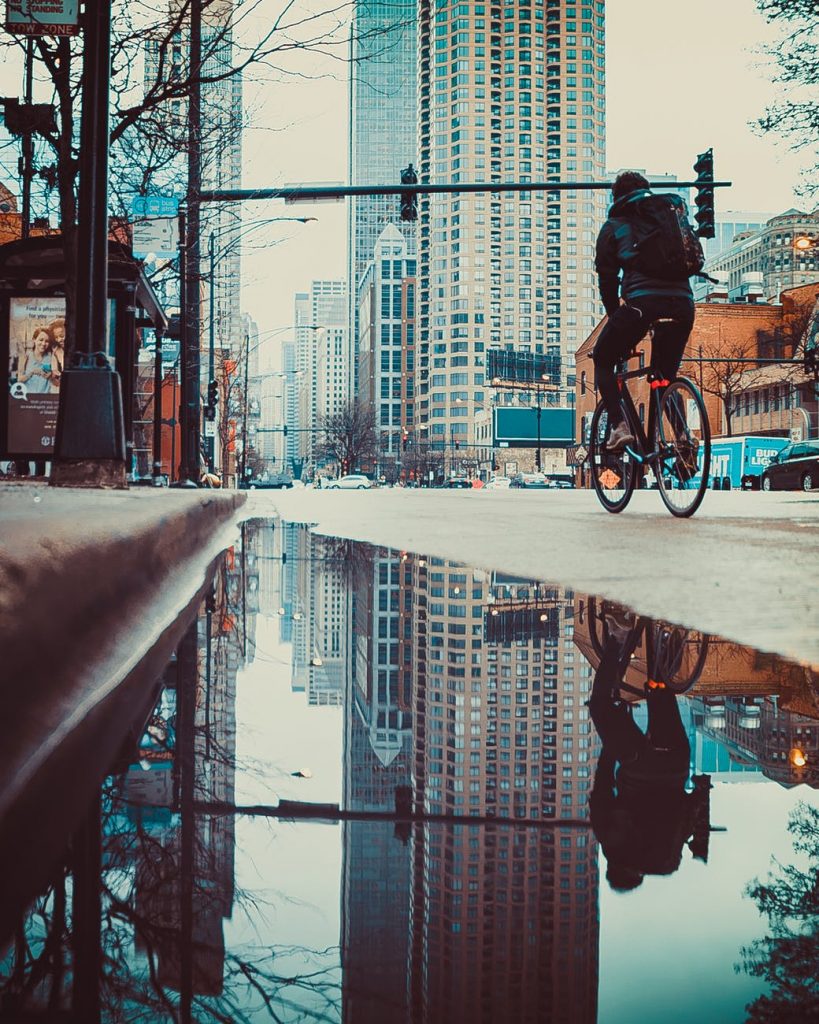
A bike ride can be fun and relaxing, but it is important to know and follow the rules of the road to cycle safely. If bike riding is part of your lifestyle, it’s important to understand how to co-exist with drivers and other cyclists. Knowing and obeying the rules helps keep you safe, and helps to avoid dangerous bicycle and vehicle accidents.
Although drivers are responsible for operating around you as a biker, you may still be at fault for a car accident if you don’t follow the laws. Review the information below to find out how you can stay safe on the road, no matter what roadway hazards and conditions you might face.
Thoroughly Inspect Your Bike
One of the most important steps for safe riding is to be sure your bike is in proper working order. Take the time to inspect your:
- Gears.
- Chain.
- Tire pressure.
- Seat.
- Tire release levers.
If your bike makes any strange noises, the chain seems loose, or the tires won’t hold air, it may need to be serviced before you can ride it. Take it to a bike repair shop before trying to go for a ride.
Adjust your seat to make sure you’re in a comfortable position to ride and ensure your bike doesn’t have any damage that would affect its functionality. When you are confident you’re ready for the road, you’ll be able to focus more on traffic, road signs, and other cyclists without worrying about your bike’s performance.
Make Yourself Visible
To prevent the hassle of dealing with the aftermath of a car accident, it’s important to stay visible as a biker, even in the daytime. Keep in mind, drivers aren’t necessarily assuming there are cyclists on the road, so the more visible you are, the better. Specific gear can help you stand out, including:
- Lights on the front and back of the bike.
- Reflectors on pedals.
- Bright-colored clothes.
- A reflective safety vest.
Don’t assume drivers on the road see you. Make eye contact with them before crossing the road and never ride in a vehicle’s blind spot.
Signal
Without turn signals or brake lights, other drivers don’t know your next move unless you tell them. Use hand signals to show drivers around you where you’re going, especially when you’re:
- Turning left: Stick your left arm out to signal a left turn. Look for cars before you turn and don’t assume a driver sees you, even if you signaled properly.
- Turning right: Stick your right arm out to signal a right turn but be sure traffic is clear before turning.
- Stopping: When you stop, move your arm down to your side, with your palm facing behind you. A stopping signal is usually only necessary when there are other cyclists behind you or you’re in an active lane.
Even if you’re in a turn lane, use your left and right turning hand signals to ensure drivers around you know where you’re going.
Know When to Yield
As a biker, you’re required to follow the same laws as drivers, which means you must obey road signs and traffic signals at all times. Be courteous to other cyclists on the road and always yield to pedestrians. If you have to report an accident to your insurance company, you may still be found at fault if you weren’t following the rules of the road, even as a cyclist.
When Able, Use Marked Bike Paths
Sidewalks are generally reserved for pedestrians and slow-moving traffic. If the road you’re traveling on has a bike lane or shoulder, stay in it as opposed to riding directly on the road in a vehicle lane. Drivers expect to see cyclists in the bike lane and they should be more aware of your presence when you’re in the proper lane.
Go With the Flow
Since cyclists are required to obey the rules of the road, they should also ride with traffic. Not only is this the law, but it can also protect you from injury. When you ride with the flow, the cars behind you have time to observe your movements and avoid you if necessary.
If you ride against traffic, drivers don’t have as much time to react when they see you. They may have to slam on their brakes or swerve unexpectedly to avoid you, which could cause an accident involving you or another driver.
Heed Signals and Signs
Stop signs, traffic signals, and construction signs apply to both drivers and cyclists on the road. If a lane is closed, you must follow the detours, just as drivers do. If there’s a 4-way stop sign, obey the sign to ensure other drivers see you before moving forward. Pay attention to signals and signs as a way to predict where traffic is heading, and so you can stay safe.
Be Aware of Road Hazards
Plan out your biking route before you go so you can attempt to avoid dangerous highways, extensive traffic, or construction zones. If you do encounter one of these road hazards, slow down, obey all signs, and ensure drivers see you before entering intersections.
Understand the Local Laws
Obeying road signs and traffic signals is important but it’s also crucial to know the local laws where you’re cycling. As a biker, you may be required to wear a helmet in some jurisdictions, and you may be subject to the same DUI laws as drivers — meaning in certain states or cities, you can be arrested for testing over the legal limit as a cyclist. Be aware of these laws before you head out to ensure you’re legally operating your bike at all times.
Don’t Engage In Road Rage
Unfortunately, some drivers don’t think bikes should have the same rights as vehicles or share the road equally. If you find yourself facing an angry driver, don’t react with gestures or yelling, even if they’re engaging in this behavior.
Try to get a good look at the driver and see if nearby cars have dash cams that may have recorded the incident. Get off the road and if the driver continues to harass you, call 911 for assistance.
When you bike on the road, you face many dangers and hazards. However, if you’re confident in your cycling abilities and you familiarize yourself with road biking rules, you can have a fun, exciting, and safe commute.





